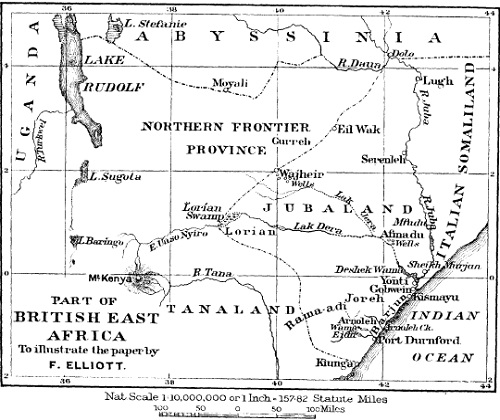
The climate in general is healthy even for Europeans, for although the heat is often intense,1`it is a dry heat very different to that of places to the south. The average coastal temperature is 80?, but inland it is greater. The seasons are as follows :
Gu, The heavy rains (March to July).
Haga`, Dry season (July to August).
Dair, Lesser rains (September to November).
Dira`, Dry season (December to February).
The two dry seasons are sometimes also called Jilaal, and the two rainy seasons Barwaaqo.
The rains fall inland first, and are often accompanied by severe thunderstorms. On the coast the rainfall is less than in the interior. The two monsoons are equally divided into periods of six months each; the south-west, blowing from April to August; and the north-east from September to March. Between the two monsoons comes a calm, when the heat is excessive.
The country may be roughly divided into the following districts : Rama-adi, Bajun, Kismayu, Juba river, Afmadu, Serenleh, Eil Wak, Wajheir, Lorian.
The district of Rama-adi, including the sub-district of Joreh, contains a group of flat-topped low hills on which a fairly plentiful quantity of rain usually falls during the year. This water, draining into the swamps mentioned above, causes the country to possess valuable feeding-grounds for cattle. Port Durnford is the natural harbour for this district, but at present the trade is undeveloped. Much valuable wild-vine rubber could be obtained from this neighbourhood, but the trade is hindered because the Somali, who dominate the country, are too supine to gather the rubber, and will not suffer the coast tribes, who are not Somali, to collect it.
Three sub-tribes of the Ogaden Somali dominate the Rama-adi district, namely, the Abd Wak, the Maghaabul, and the Abdullah. They possess large herds of cattle, but they do not breed camels.